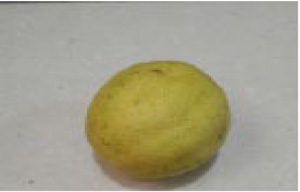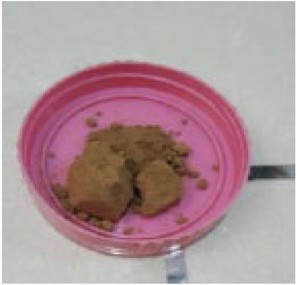All published articles of this journal are available on ScienceDirect.
Current Review on Plant based Pharmaceutical Excipients
Abstract
Background:
Plants act as a major source of medicines and are used to formulate various pharmaceutical preparations. Apart from this, they act as excellent pharmaceutical aids as well as excipients.
Objective:
An effort has been made for the complete study of plants under different categories of plant-based thickeners, emulsifiers, suspenders, binders, etc.
Materials and Methods:
The herbs were differentiated on the basis of their role as flavoring, sweetening, colouring, gelling, thickening, emulsifying, suspending and binding agents.
Results:
The use of natural excipients to impart the goodness of natural bioactive agents has been hampered by synthetic materials. However, advantages offered by these natural excipients are enormous as being non-toxic, affordable and easily available. The activity of the excipients partly determines the quality of medicines.
Conclusion:
The herbal excipients act better in many ways when compared to their synthetic substitutes.
1. INTRODUCTION
Excipients are primarily employed as diluents, binders, disintegrants, adhesives, glidants and sweeteners as in ancient indefinite quantity forms like tablets, capsules etc. [1], because the institution of toxicity and approval from restrictive authorities advises a giant downside with artificial excipients, additional interest is being shown by researchers within the field of flavouring excipients. Additionally, to traditional pharmaceutical excipients as bulking agents, a substance used for masking taste/texture or as a substance used to help throughout the production method, novel excipients supply a broad variety of properties appropriate to preserve the integrity of active constituents of the formulation and improve their shelf life [2]. Excipients are the substances or compounds,apart from the active pharmaceutical ingredients and packaging materials, that have an effect on finished product quality, in some cases creating up nearly the entire formulation. They are essential within the good planning of the pharmaceutical merchandise. Pharmaceutical excipients are crucial to drug delivery inside the body. Generally, an excipient has no medicinal properties.
Its purpose is to contour the manufacture of the drug product and ultimately facilitate physiological absorption of the drug [3]. In recent years, plant-based materials have elicited tremendous interest because of their huge pharmaceutical applications like dilutant, binder, disintegrant in tablets, thickeners in oral liquids, protecting colloids in suspensions, gelling agents in gels and bases in suppository; they are additionally employed in cosmetics, textiles, paints and papermaking [4]. Many pharmaceutical excipients of plant origin, like starch, agar, alginates, carrageenin, guar gum, acacia gum, xanthan gum, gelatin, pectin, tragacanth, numerous colouring, flavouring and sweetening agents are widely applied within the pharmaceutical trade as binding agents, sustaining agents, thickening agents, gelling agents, stabilizers, and coating materials [5]. The specific applications of plant-derived polymers in pharmaceutical formulations include their use in the manufacturing of implants, films, beads, microparticles, nanoparticles, inhalable and injectable systems as well as viscous liquid formulations [6-8]. This article gives an overview of herbal excipients which are used in conventional dosage forms as well as novel drug delivery systems. On the basis of different role as pharmaceutical aids, herbs have been divided into several categories as shown in Fig. 1

2. PLANT-DERIVED THICKENERS
Various thickeners are found in nature or are derivatives of natural thickeners. These ingredients are polymers that absorb water to expand and increase viscosity. Polyose derivatives like hydroxyethylcellulose are often employed in products like shampoo or body washes. Gum is another example of a naturally derived thickener. Others embrace algarroba bean gum, xanthan gum, and gelatin. Plants and different gums are employed in sensible applications primarily to thicken or gel binary compound systems and to regulate water. They will conjointly operate as adhesives, foam stabilisers and impart different specific properties. These thickeners will be employed in any formula that contains a high level of water. Typically, they will be inconsistent, as a result of clear formulas to become cloudy, and feel sticky on skin [9]. Xanthan gum is an associate example of high relative molecular mass additional cellular saccharide created by the fermentation of the gram-negative bacteria genus campestris [10-12].
3. PLANT-DERIVED BINDERS
Binders square measure the agents utilized to impart cohesiveness or adhesion to the granules. This ensures that the pill remains intact when compressed in addition to the flow qualities by the formulation of granules of derived hardness and size [13, 14]. The employment of genus Dioscorea rotundata as a binder and disintegrant in pill formulation and therefore has the compressional propertiesa [12]. The con-sequences of columbiform bird pea and plantain starches on the compressional, mechanical and disintegration properties of Paracetamol tablets are investigated [15]. Starch 1500 has been tested as a wonderful binder, manufacturing a granulation that was compressible [16, 17].
4. PLANT-DERIVED EMULSIFIERS
Substances that square measure soluble in each fat are associated with water and modify fat to be uniformly distributed in water as an emulsion. Foods such as butter, margarine, dish dressings, mayonnaise, and frozen dessert are based on these are based on these emulsions. Stabilizers maintain emulsions as a stable type. Emulsifying agents are also utilized in baking to assist the incorporation of fat into the dough and to let the formulation stay soft. Gum arabic or gum acacia is the dried gluey exudate obtained from the stem and branches of a tree, African nation (Linne) Willdenow and different connected species of acacia (Family Leguminosae). The gum has been recognized as associate degree acidic saccharide containing D-galactose, L-arabinose, L-rhamnose, and D-glucuronic acid. Tree is especially utilized in oral and topical pharmaceutical formulations as a suspending and emulsifying agent, typically together with gum. It is conjointly utilized in the preparation of pastilles and lozenges and as a pill binder [18-20].


5. PLANT-DERIVED SUSPENDERS
Gums act as suspending agents. They effectively stabilize the emulsion via surface absorption and ensuant formulation of condensed film of high endurance that resists coalition of droplets. They stabilize oil/ water emulsion by forming robust multimolecular film spherical. Every oil globe, therefore, retards the coalition by the deliquescent barrier between the oil and water section [21]. Gum is the dried gluey exudation from Astragalus gummifer and different species of Astragalus. The gum is obtained through injury to the stem and is accumulated within the pith and medullary rays. In general, for many of the gums, absorption of water causes the gum to swell and exude through the incision. Most of the gums contain Ca, metal and K salts of bassoric acid, referred to as bassorin. Most of them are reportedly used as a suspending agent for insoluble powder [22].
6. PLANT-DERIVED GELLING AGENTS
There are several square measure gelling agents. Some of the common ones square measure are tree, gum, tragacanth, and xanthan gum. Some gelling agents square measure a lot of solublity in cold water than in plight. Methylcellulose and poloxamers have higher solubility in cold water whereas clay, gelatin, and Na cellulose square measure a higher solublity in plight. Carbomers, tragacanth, and gum gels square measure is created with lukewarm water [23]. The vital gums that realize application in food as gelling agents are alginate, pectin, carrageenin, gellan, gelatin, agar, changed starch, alkyl polysaccharide and hydroxypropylmethyl polysaccharide [24-28].
7. PLANT-DERIVED FLAVOURER AGENTS
Flavoring materials are received from a number of sources, and mostly from plants such as from flower, leaf, stem or bark. To be employed in food merchandise, the materials area unit typically extracted from the material to produce an isolate that is simply the flavour [29]. These flavourer agents have good importance within the business of medication, particularly in camouflaging with the medicines by their indispensable flavors. Thus, they are additionally referred to as “masking agents” or “bitter blockers”. The principal flavors employed in the dental merchandise area unit peppermint, spearmint, and wintergreen changed with different essential oils of anise, clove, caraway, pimento, eucalyptus and citrus fruits, menthol, nutmeg, thyme or cinnamon as shown in (Fig. 2) [30-32].
8. PLANT-DERIVED COLOURING AGENTS
In India, there are more than 450 plants that can yield dyes. In addition to their dye-yielding characteristics, some of these plants also possess medicinal value. The use of natural products together with their therapeutic properties is as ancient as human civilization and for a long time, mineral, plant and animal products were the main sources of drugs. Turmeric and henna as shown in (Fig. 3) are good sources of color [33-35].
9. PLANT-DERIVED SWEETENING AGENTS
Steviol glycosides are a gaggle of extremely sweet diterpene glycosides contained within the leaves of stevia. Mogrosides, extracted from monk fruit are a gaggle of cucurbitane-type triterpenoid glycosides. Glycyrrhizin is an oleanane-type triterpenoid organic compound derived from the underground elements of Glycyrrhiza plant [36]. Dates are wonderful sweeteners loaded with K, copper, iron, manganese, metallic element and pyridoxal [37]. The syrup is an excellent sweetener enriched in manganese, Calcium, Potassium, and Zn [38, 39].
10. RESULTS AND DISCUSSIONS
Today, the main concern is patient compliance, and to achieve this, there is a requirement for development of the flavoring primarily based excipients, which are potent perishable materials. These may be pharmaceutically compatible with the excipients in novel drug delivery systems. To boot flavoring excipients are chock-full of advantageous options as they are non-toxic, freely accessible, and are more cost-effective as compared to their artificial substitutes. In modern science, artificial excipients were developed and widely employed until the twentieth century, however, once the price and safety were questioned, they began looking towards ancient knowledge to understand the use of natural excipients. They play a significant role within the pharmaceutical business. Therefore, there is a persistent interest in natural excipients to find better substitutes for drug delivery systems. The utilization of natural excipients to deliver bioactive agents has been replaced by artificial materials but the advantages offered by these natural excipients are huge. The performance of the excipients is partially accountable for the standard of the medicines. The traditional idea of the excipients as any part apart from the active substance has undergone considerable evolution from an inert and low-cost vehicle to an important constituent of the formulation in the last decade. Excipients have a significant share during a formulation usually and contribute by their distinctive pharmacokinetics and pharmacodynamics except Active Pharmaceutical Ingredients to finish the target of drugs. Ayurvedic system of the medicinal drugs is in demand with strict regulation of states requiring advancement in indefinite quantity with natural excipient. In this regard, these natural excipients employed in Ayurvedic medical specialty might play a significant role as sweeteners, binders, suspenders, adhesives, etc.
CONCLUSION
Natural excipients development is gaining heaps of recognition currently. Some polysaccharides obtained from plants like carrageenin, alginate, gum arabic, guar gum, gum and carob gum have shown several applications in controlled indefinite quantity forms. Excipients have to pass strict regulative needs before being incorporated into approved indefinite quantity forms. The flavorer or natural excipients have excellent advantage over their artificial counterparts as they are non-toxic, more cost-effective and freely available. The increasing awareness concerning these flavorer excipients has led the pharmaceutical industries to incline towards their use in the development of formulation. The plant-derived gums and mucilages from natural sources like carrageenin, thaumatin, storax, agar, gum tree and gum accommodate several needs of pharmaceutical excipients. These excipients are stable and involve less regulative problems as compared to their artificial counterparts. Excipients, being an important part of health products, ought to be safe and stable. To avoid the employment of incompatible excipients, numerous stability testing procedures are carried out.
CONSENT FOR PUBLICATION
Not applicable.
CONFLICT OF INTEREST
The authors declare no conflict of interest, financial or otherwise.
ACKNOWLEDGEMENTS
Declared none.


